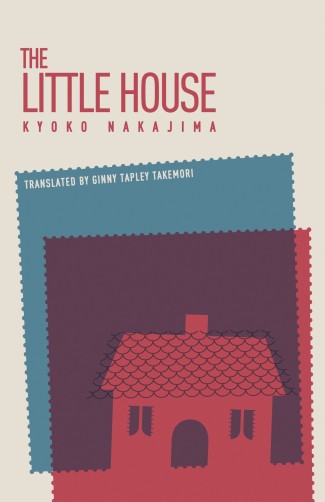The Little House by Kyoko Nakajima
Stories that take place during Japan’s peak imperial era are often received critically – and rightfully so. However, The Little House by Kyoko Nakajima, and translated by Ginny Tapley Takemori, is a different kind of book. The story largely takes place through the protagonist’s memoirs of times in the early Showa Era (1926-89) – namely before, during, and a bit after the war. Yet Nakajima approaches the topic with an immense amount of care. The war is neither front and center or ignored. The novel’s memoir style is very fitting for this approach.
The world of The Little House is very believable in how it approaches the period as a memoir – it feels that current to the time period. This is exactly what makes it so absolutely charming. Combined with the power of Ginny Tapley Takemori’s translation, you are effortlessly pulled back to the era. The words she chose match the time period and character of the novel beautifully. Some may find that dull, but if you can see and appreciate how it all blends together, you won’t be disappointed by this book.
The Story

The Little House follows the protagonist, Taki, as she writes a memoir about her days as a maid in Tokyo. Having left her hometown in rural northern Japan in the 1930, Taki is first sent to work for Master Konaka, a novelist. There she learns everything she needs to know about being a maid. Then she enters the service of Mistress Tokiko – who she will end up staying with for the remainder of her career as a maid.
The bulk of the story takes place during Mistress Tokiko’s second marriage to Master Hirai. He holds a high position at a very successful toy company in the city. Kyoichi, her son from her first marriage, and Taki, are also with her. Once married, the couple work on building their dream home – a modern, western home in suburban Tokyo. The story focuses on Taki though, who tells us about all the joys and troubles she experienced as Mistress Tokiko’s maid.
While the book takes place mostly in the past, there are sections in Taki’s present as well. She provides commentary on her memories and talks about her nephew, Takeshi. Takeshi is critical of his aunt and her memories of the war. Yet he continues to read Taki’s memoir with interest.
Creating a Balance
Balance is key the success of The Little House. Taki’s memories are simple in nature. She focuses on all the tasks required of a maid – cooking, cleaning, and caring for young master Kyoichi. Yet she dwells very little on the war. Thinking only about the story, there are many possible reasons for this. Taki is an uneducated maid. However, this is not how Nakajima has constructed her character. The focus is on Taki’s everyday life as a maid is purposeful, and not because Taki is uneducated. Of course the war is mentioned, but so are the Olympics, and other events that were important to the Hirai’s. Everything remains in the small sphere of their household worries and concerns.
At the time, Taki’s knowledge came primarily from Master Hirai and Mistress Tokiko. The Master’s concerns were largely about the upcoming Olympics and his work at the toy factory. Mistress Tokiko is just trying to run her household. Young master Kyoichi is a child and sickly for much of the novel. Their concerns shift as the story progresses, but they remain very everyday throughout. Takeshi’s character is what otherwise balances out the story. His commentary both provides context and perhaps even mocks much of the Japanese discourse surrounding the period. He is critical in all the ways Taki isn’t and lacks understanding in ways that she does not. This poignant approach to the topic makes it very approachable, even to the uninitiated.
The Translation
Ginny Tapley Takemori did a great job on the translation of this novel. The style is clear to understand and matches the time period well. The result is that The Little House reads much like an actual novel written from the early Showa Era. This is fitting for several reasons. For one, it solidifies Taki’s position as our elderly narrator and protagonist. Perhaps more importantly though, it brings the period to life and manages to do so while being extremely accessible. While the novel could have been successfully written in a more modern style, that special something might have been lost.
Even more impressive is that the style and tone remain eerily similar during the present as well. This makes sense for Taki – our language only evolves to a certain point before it becomes dated. Yet the nostalgia is still present even when focusing on Takeshi. This has an interesting affect on the narrative, that you’ll have to discover by reading the book though. Overall, an excellent job from a very skilled translator.
In Conclusion
Even in the world of social media and the internet, so much information is missed. Imagine how difficult it was to keep the facts straight in an era where information moved much more slowly. We still learn of devastating human and natural disasters after the fact. Information still passes through so many hands that it’s hard to know what to believe. Hindsight is 20/20 after all. Perhaps this is the true takeaway from The Little House. No matter how much we know and experience, ultimately, what we will remember are those events that impacted us the most directly. It is a sign of privilege, yes, but a reality for many nonetheless. The Little House offers a charming story with carefully veiled commentary about the war era. It’s definitely a must read for anyone interested in the period and the consequences of the war in Japan today.

